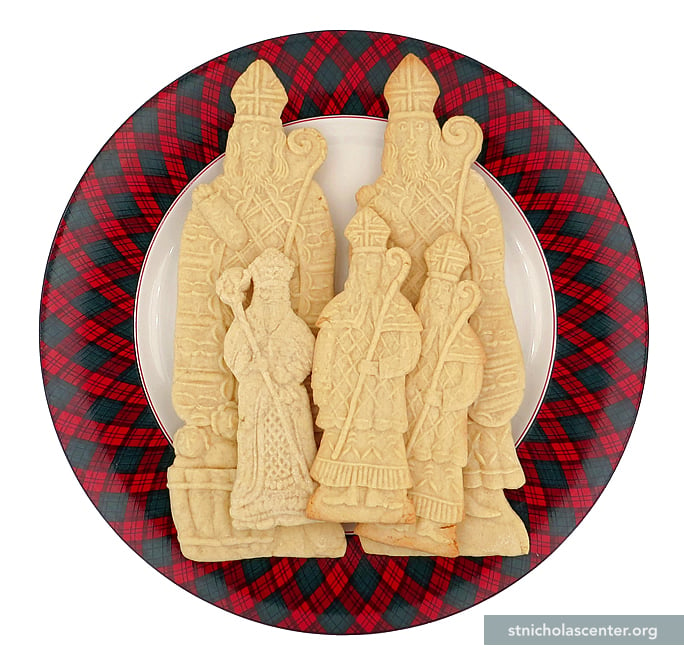Creamy Coconut Cookies
By Anne L. Watson, from Baking with Cookie Molds.
A soft, cakelike cookie with a natural coconut taste. The dough is very easy to handle, and the cookies are pale, so they're a good choice for small or intricate molds.
Metric measurements given here are not exact conversions but approximations, usually rounded to the nearest five units. Also given in parentheses are U.K. equivalents to U.S. ingredients and terms.
Be careful to not add too much flour, or bake too long, as the cookies will get quite hard.—ed.
Ingredients
1/2 cup (115 grams) unsalted butter
1 large egg
1 cup (235 milliliters) canned cream of coconut (See notes below.) Cream of Coconut is harder to find than Coconut Cream that you do not want. It may be with other Hispanic foods.—ed.
2 teaspoons coconut extract
1/2 teaspoon vanilla
1/2 cup (100 grams) sugar
1/4 teaspoon salt
About 4 1/2 cups (630 grams) all-purpose flour (plain flour)
Directions
- Melt the butter and set aside.
- Beat the egg in a large bowl until yolk and white are fully mixed.
- Mix the cream of coconut, coconut extract, and vanilla. Add to the egg and beat until well mixed.
- Mix the sugar and salt. Add to the egg mixture and beat until well mixed.
- Add the melted butter slowly and beat until well mixed.
- Add flour slowly until the mixture is solid enough to knead.
- Transfer to your work surface and knead in more flour to make a soft, slightly sticky dough.
- Wrap or cover the dough and refrigerate for up to 1/2 hour—until it's firm but still flexible.
- [Roll and form the dough with a cavity mold according to the directions for Anne's Lemon Cookies, or with an impression mold according to the directions in the chapter "More about Molds," in Baking with Cookie Molds.]
- The method I use, with success (Tips for making molded cookies with cookie boards):
1) Prepare mold by lightly brushing the cavity with cooking oil (blot with paper towel, if needed). Then thoroughly flour mold; knock off excess flour onto a piece of wax paper.
2) Handle dough with floured hands. Take a piece of dough (about 1/2 cup) and work into mold from the bottom up. Smooth and remove excess with a straight edge narrow spatula or knife (an extra large cheese slicer works very well).
3) Bang one end of the the mold sharply on the ungreased cookie sheet where you want the cookie to be. It will drop out nicely—the weight of the cookie will pull the last part out.
4) Thoroughly flour mold again, banging out the excess, before shaping each succeeding cookie. —ed. - Refrigerate the cookies while you preheat the oven to 350°F (175°C), or lower for especially thick cookies. I don't find this necessary. —ed.
- Bake for 10 to 15 minutes or until the edges have slightly browned and the top has begun to firm up.
Notes
Cream of coconut is a sweetened mixture used in drinks and desserts. It is not to be confused with coconut cream, which is unsweetened. Like natural peanut butter, cream of coconut tends to separate, so stir to blend well before measuring.
 |
Baking with Cookie Molds, by Anne L. Watson, Shepard Publications, 2010, 2018.
Recipes and technique to successfully make beautiful molded cookies—especially St. Nicholas, of course! Updated, expanded, and full-color edition.
Purchase from amazon.com, amazon.ca or amazon.uk.
 |
Cookie Molds Around the Year: An Almanac of Molds, Cookies, and Other Treats for Christmas, New Year's, Valentine's Day, Easter, Halloween, Thanksgiving, Other Holidays, and Every Season, by Anne L. Watson, Next River Books, 2017.
More recipes, more tips, and more beautiful photos of molded cookies for every occasion. A good companion and expansion to Baking with Cookie Molds.
Purchase from amazon.com, amazon.ca or amazon.uk.
From Anne L. Watson, Baking with Cookie Molds, Shepard Publications, 2016. Used by permission.


